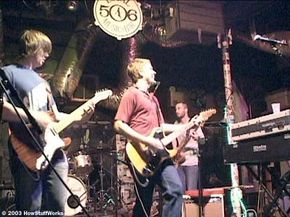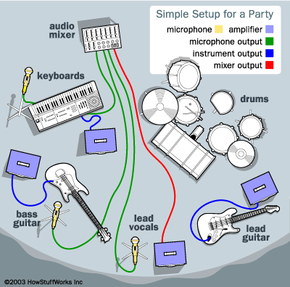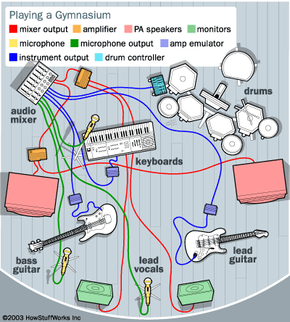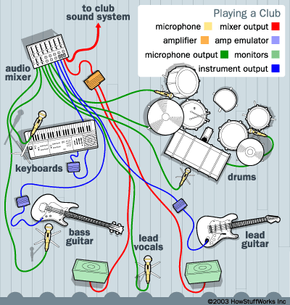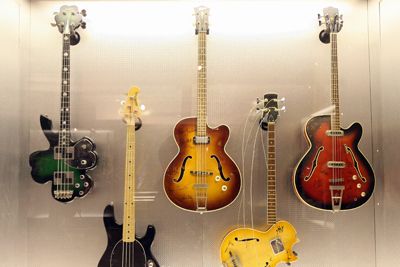Let's assume that your band has five members:
- Lead guitar - The guitarist owns his guitar and amp.
- Bass - The bassist owns his guitar and amp.
- Drums - The drummer owns his drum kit.
- Keyboards - The keyboardist owns his own keyboard and amp.
- Lead singer - The singer owns his own microphone and amp.
In addition, two of the other band members sing background vocals.
When you are practicing, this is all that you need. With this basic equipment, you can play in a garage or a basement and make plenty of noise for the space.
This same equipment may also be enough to handle a party or even a small club. It depends on the size of the amps that the players have. If they are 10- or 15-watt units, they may not be enough to fill a space larger than a garage, especially if there are a lot of people in the room talking. On the other hand, a 30- or 60-watt guitar amp can handle most rooms.
The gear you probably don't already have is a mixer and mikes for the background vocalists. When you are practicing, you may not even care about the background vocals. But during a performance, the background vocalists need to be heard to fill out the band's sound.
The easiest way to handle the background vocals is to buy a small 4-channel mixer. With the mixer, you can mix the background and lead vocals together and amplify the signal with the lead singer's amp. So, just add the mixer, the mikes for the background singers, mike cables and mike stands to your shopping list -- and you're set for a fairly intimate venue. But, if you're booked to play something larger, keep reading...

